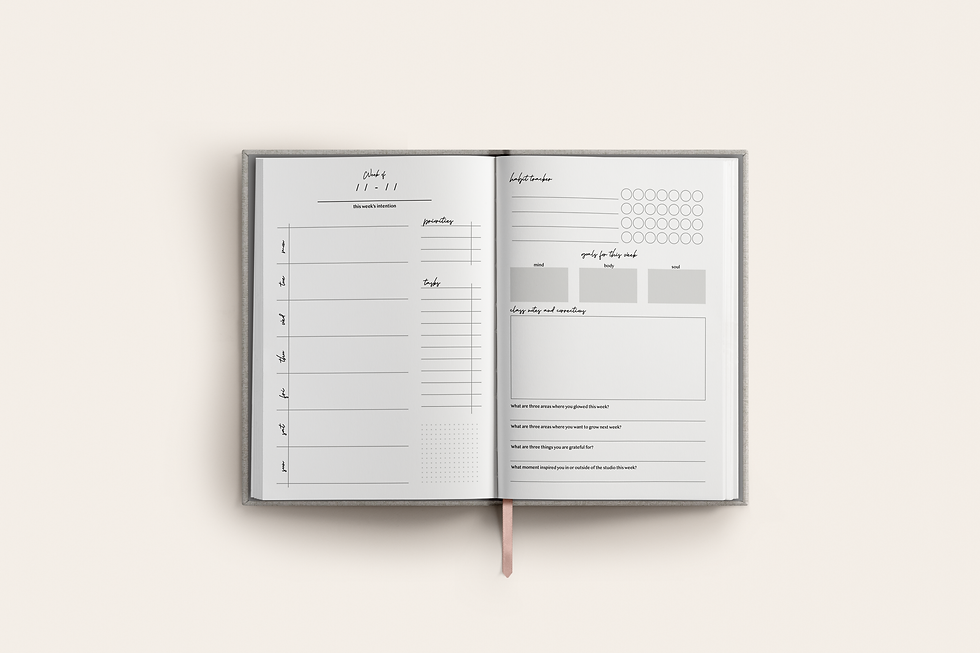How to Choose the Right College Dance Program. And Actually Feel Confident About It.
- Eliza

- Apr 16
- 4 min read
Updated: Apr 18

If you’re a dancer auditioning for college programs, you’ve probably asked yourself:
“How do I know which dance school is the right fit?”
You’re not alone. Whether you're dreaming of Juilliard-level concert dance, imagining a double major, or looking for a well-rounded training experience, the college dance landscape can feel like a maze. Between course catalogs, audition deadlines, and endless program websites—it’s easy to feel stuck.
I’ve been there. And I want to share not just what helped me, but what I wish I’d known when choosing my own college dance program.
Why Asking If You Fit In Isn’t the Best Question
It’s totally natural to wonder if you’ll feel like you belong—but a better guiding question is:“Will this program shape me into the dancer and artist I want to become?”
Your college years are for growth, not just fitting into a mold. When you shift the focus from fitting in to becoming, everything changes. That one mindset shift helped me find the program that was actually right for me—even if it wasn’t what everyone else was choosing.
My College Search Story
I grew up in a ballet studio, but by senior year, I craved something more expansive—more Modern, more choreography, more critical thinking. I loved the idea of becoming a well-rounded performer and educator. And I knew I wanted to graduate not just with technique, but with the tools to teach, choreograph, and think deeply about dance as an art form.
So I looked for a program that had:
A balanced mix of ballet and Modern
Academic depth like Dance History and Anatomy
Choreography opportunities starting early on
Faculty who cared about developing versatile artists, not just replicating technique
What I didn’t realize at the time was that many other dancers were choosing programs with very different goals—some wanted commercial gigs in LA or Broadway contracts, but were enrolling in schools known for abstract Modern repertory and academic rigor.
They didn’t always know what they were getting into. And that’s the tricky part. Most college dance programs sound amazing. But what matters is whether they’re amazing for what YOU want to do.
How to Actually Choose a College Dance Program
This is where things get real. Here are five strategic questions to help you cut through the noise and find clarity:
What Do You Want to Do After You Graduate?
Do you want to perform, teach, choreograph, or all three?
Picture your ideal day five years from now. What are you doing—and what kind of training gets you there?
Research alumni. Are they doing what you want to do?
If you want to perform, look at:
Repertory: Is it concert dance, commercial, ballet, interdisciplinary?
Guest choreographers and show opportunities
Senior project or audition prep support
Summer intensives the school supports or connects you with
If you want to teach, ask:
Are there pedagogy courses in the curriculum?
Does the program partner with K–12 schools or studios for field experience?
Are you learning the science of movement—anatomy, kinesiology, somatics?
If you want to choreograph, investigate:
Composition and improvisation courses
Annual student works festivals or senior showcases
Mentorship from faculty choreographers
How Flexible Is the Program?
Want to double major? Study abroad? Minor in Arts Admin?
Ask about:
Typical course load (aim for 15–18 credit hours if you’re dancing daily)
How rehearsals are scheduled—do they conflict with academic classes?
Do the dance and non-dance departments work together to support double majors?
While it’s not for everyone, double majoring can help blend your creative and analytical strengths. Talk to current students doing what you’re considering—they’ll give you a much more honest answer than any brochure will.
What Is the Teaching Style of the Faculty?
Some programs are highly traditional. Others are experimental. Some schools operate like small conservatories within universities, and others are theory-heavy liberal arts programs with dance woven in.
Ask yourself:
Do I want a highly structured technique-first experience?
Or do I want more room for creative inquiry, experimentation, and academic research?
How do I learn best—and which faculty align with that?
Look for faculty bios online, watch their work, and (if possible) attend a performance or open class.
What's the Program Culture?
College is more than just class—it’s where you’ll spend hours in the studio, in rehearsal, in critique, in community. Are students kind? Competitive? Collaborative?
If you can:
Shadow a current student or attend a virtual Q&A
Read the student handbook (yep—it exists)
Follow the department on social media for a peek behind the scenes
Is a 4-Year University Your Best Path?
Four-year universities aren’t your only option.
Consider:
Dance conservatories for immersive, intensive training
Community college + transfer pathways to save money and build confidence
Apprenticeships or trainee programs that get you right into the field
Don’t feel boxed in by the “normal” path. Your journey should reflect your needs—not anyone else’s.
Still Feeling Unsure...
You don’t have to do this alone. I created Cozy Dancer to be a space where dancers can feel supported as whole people—not just performers.
Want help sorting through your options? I offer one-on-one mentorship sessions for dancers preparing for college auditions, navigating program choices, and designing their unique path in dance.
You can also check out the Cozy Dancer Journal—a beautiful tool for weekly self-reflection, growth tracking, and intention setting. It’s perfect for pre-professional dancers juggling life, school, and creative goals.
Click here to explore mentorship offerings and resources tailored for dancers just like you.
Whether you’re stepping into your first audition room or trying to decode a dance program’s website, remember this:
You deserve a college experience that feels aligned, empowering, and deeply you.
Let’s get you there
Stay cozy,
Eliza Walsh
Founder, Cozy Dancer




Comments